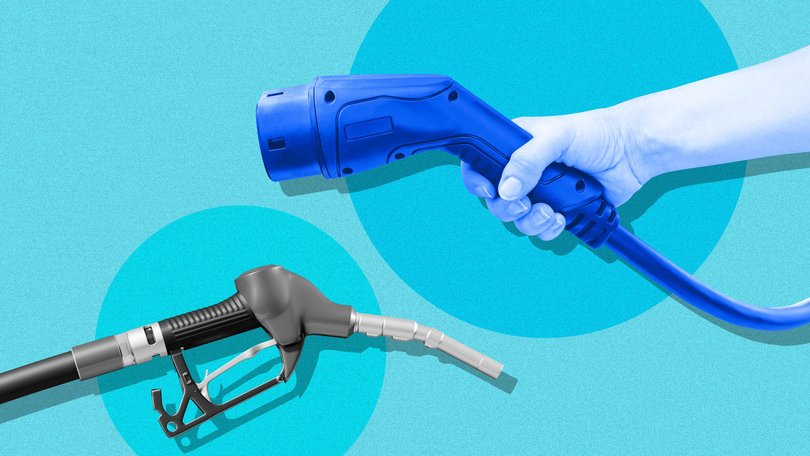From more expensive diesel utes to cheaper solar batteries, Teslas: Here’s what 2035 emissions target means

Australians could end up paying a lot more for diesel utes and electricity but save thousands on new Tesla EVs and solar batteries at home under Labor’s more ambitious 2035 climate change target.
Prime Minister Anthony Albanese’s plan to slash carbon emissions by 62 to 70 per cent within the next decade, compared with 2005 levels, is tipped to have widespread implications for consumers.
The surprise new target, unveiled on Thursday, marked a step up from the previous goal of a 43 per cent emissions reduction by 2030, and is expected to involve considerable pain in coming years, with motorists forced to shell out thousands more for diesel utes and four-wheel drives.
Sign up to The Nightly's newsletters.
Get the first look at the digital newspaper, curated daily stories and breaking headlines delivered to your inbox.
By continuing you agree to our Terms and Privacy Policy.Under the new plan renewable energy would be required to make up 90 per cent of electricity transmission by 2035 - accelerating from the existing target of 82 per cent by 2030 - with the Federal Government committing $70 billion over coming decades to decarbonise the economy.
Electricity users connected to the grid face hip pocket pain as networks are rewired for renewable energy.
But this could encourage more Australians to embrace cheaper solar batteries to eliminate the quarterly bill shock.
Diesel dilemma
Half of the cars sold between now and 2035 need to be EVs - a quantum leap from the current take-up of one in ten vehicles.
The climate plan regards EVs as the “primary technology for reducing light vehicle emissions” noting they had “lower lifecycle emissions than petrol and diesel internal combustion engine vehicles”.
Tony Weber, the chief executive of the Federal Chamber of Automotive Industries, said Australians wanting a diesel ute or four-wheel drive would have to pay thousands more for the privilege under the more stringent climate change target.
“Any technology that doesn’t meet the target will be penalised ultimately and those penalties have to be paid by someone,” he told The Nightly.
But economist Pradeep Philip, the head of Deloitte Access Economics, said it would take until the 2030s before diesel utes became prohibitively expensive.
“These things are hard to say. Maybe over a decade,” he said.
More ambitious climate change targets could also mean more stringent rules for new cars with petrol or diesel engines, in a bid to encourage more people to buy a fully electric car.
EVs still only make up less than eight per cent of new car sales, despite a big influx of new models from China, including from the likes of BYD.
“It’s all predicated on consumer acceptance of low-emission technologies. Fundamental to that will be acceptance of pure EVs,” Mr Weber said. “It’s not occurring at this point in time.”
The New Vehicle Efficiency Standard, which came into effect in July, is already aiming to reduce passenger car emissions by 59 per cent by 2030, as light commercial vehicle pollution fell by 48 per cent.
The car industry’s peak body last year estimated the new rules would add $13,250 to the price of a diesel-powered Toyota LandCruiser but reduce the price of a fully-electric Tesla Model Y by $15,390 under a credit systems that punished car makers that sold too few EVs.
Electric shock therapy
Despite Canstar Blue estimating that NSW consumers already pay an average of $1800 a year on electricity, the ambitious new target could still mean even more expensive power bills.
The decommissioning of coal-fired power stations and replacing them with renewable energy, will also mean an ambitious rewiring of the national grid, flowing through to higher bills.
“You expect that in some parts of the economy, prices will go up for a period of time,” Mr Philip told The Nightly.
“This is the great challenge of the transition. There’s been a lot of investment into generation, and we are probably a little bit behind on transmission. Rewriting the grid is going to have to happen anyway. That’s a tricky question.”
Brett Redman, the chief executive of electricity transmission company Transgrid, admitted that rewiring the electricity network for renewable energy was a big task.
“It will take the aligned efforts of governments, regulators and the entire energy sector to ensure renewable generation and security services are ready on time as coal retires,” he said.
However, this could present opportunities to buy cheaper solar batteries, which now typically cost more than $15,000 to install for models with 13 kilowatt hours of power, before Federal Government rebates are factored in.
Mr Philip said these batteries would become much more affordable as the Federal Government’s climate targets encouraged more manufacturers to produce goods that stored solar power at night.
“Just as we’ve seen an explosion of solar panels, we’ll now start to see explosion of batteries,” he said.
“Once you get scale, with any business, you start to drive prices down.”
Deloitte Access Economics estimated a stronger 2035 target could save 4 million homes and businesses $6 billion a year in savings if they had rooftop solar.

